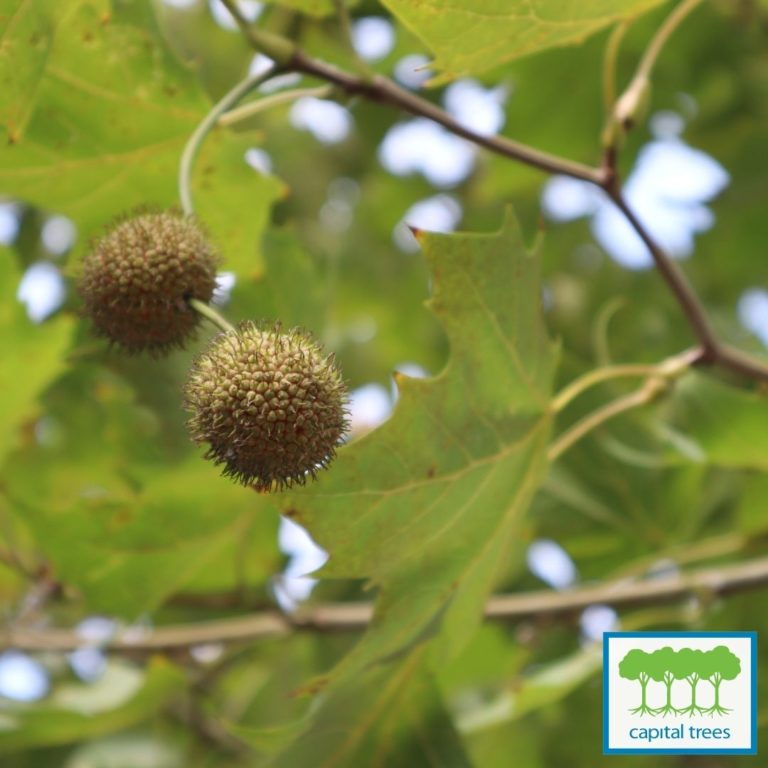 November’s plant of the month is the London Plane Tree Platanus x acerifolia (Previously Platanus x hispanica).
November’s plant of the month is the London Plane Tree Platanus x acerifolia (Previously Platanus x hispanica).
The origins of this tree aren’t entirely known. It’s suspected that it is a cross between a native American Sycamore Tree and a non-native Oriental plane tree. Though, in appearance, it looks most like a sycamore. It is marked by a darker exterior bark that sloughs off in pieces to reveal lighter colored inner bark. (1)
If you’ve been following our organization for any period of time, you know that we encourage the use of native plants, trees, and shrubs whenever possible. But our projects also leverage a percentage of non-native plants and trees. It’s part of our approach to create resilient garden spaces. When we plant trees in our urban landscapes, we want them to be part of the tree canopy for decades to come. But in order for that to be possible, we need hardy trees that can handle the pollution they’re exposed to in an urban environment.
The London Plane Tree was chosen for its ability to withstand the urban conditions we knew it would be exposed to at the Low Line. Sometimes, trees planted in cities don’t thrive, which defeats the purpose of planting them in the first place. As a rule, the London Plane Tree tends to live longer than other shade trees when planted in cities. When it was discovered that the London Plane Tree could withstand the smoke and pollution in London, it was widely distributed to cities throughout the British Isles and North America. In fact, they make up approximately 15% of the trees growing along the streets of New York City. (2)
The London Plane Tree is capable of growing to a whopping 70-100 feet tall in an ideal environment. While they don’t typically get that tall in urban areas, they do get tall enough to provide valuable shade to our community.
The London Plane Tree prefers full sun to partial shade and slightly wetter soil. The tree is capable of handling both occasional flooding and drought. That makes it particularly well suited for the varied conditions it will experience at the Low Line. They are deciduous in nature, with leaves that turn a rich yellow in the fall. The leaves, seeds, and bark can make a bit of a mess on the ground below. On the other hand, the subtle flowers are beneficial to pollinators and the seed heads provide food for small songbirds and squirrels.
The London Plane Trees bookmark the Low Line Gardens. You can see them as you enter the gardens from either direction. We appreciate all the benefits that they bring to visitors of the Low Line – animals and humans alike.
(1) https://plants.ces.ncsu.edu/
(2) https://www.nytimes.com/2016/


